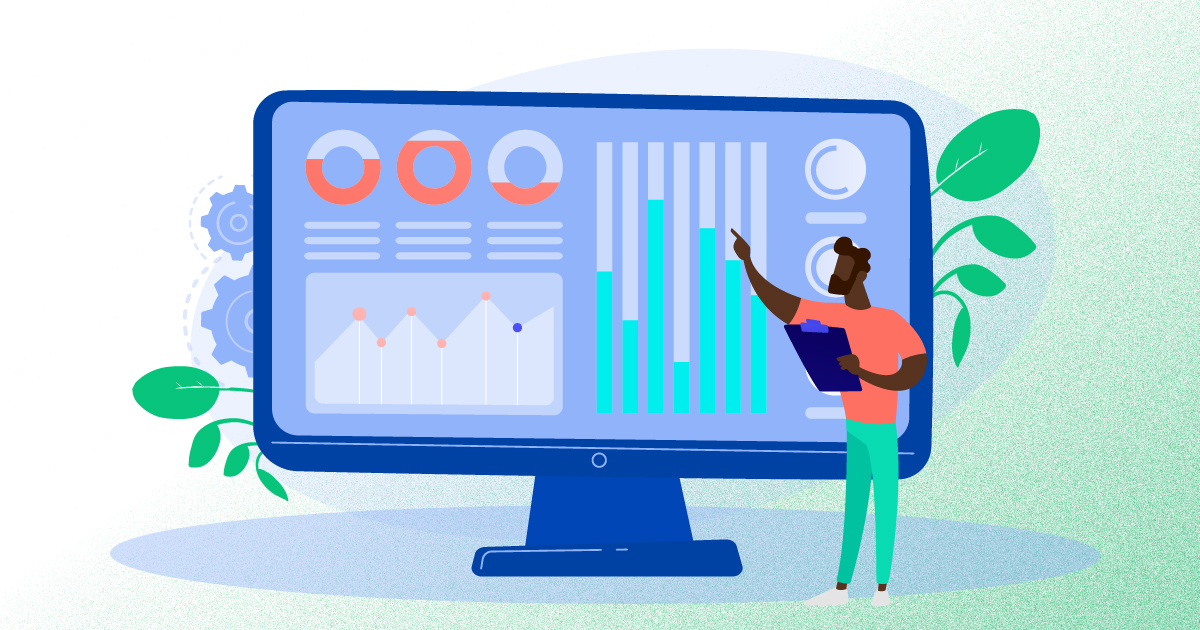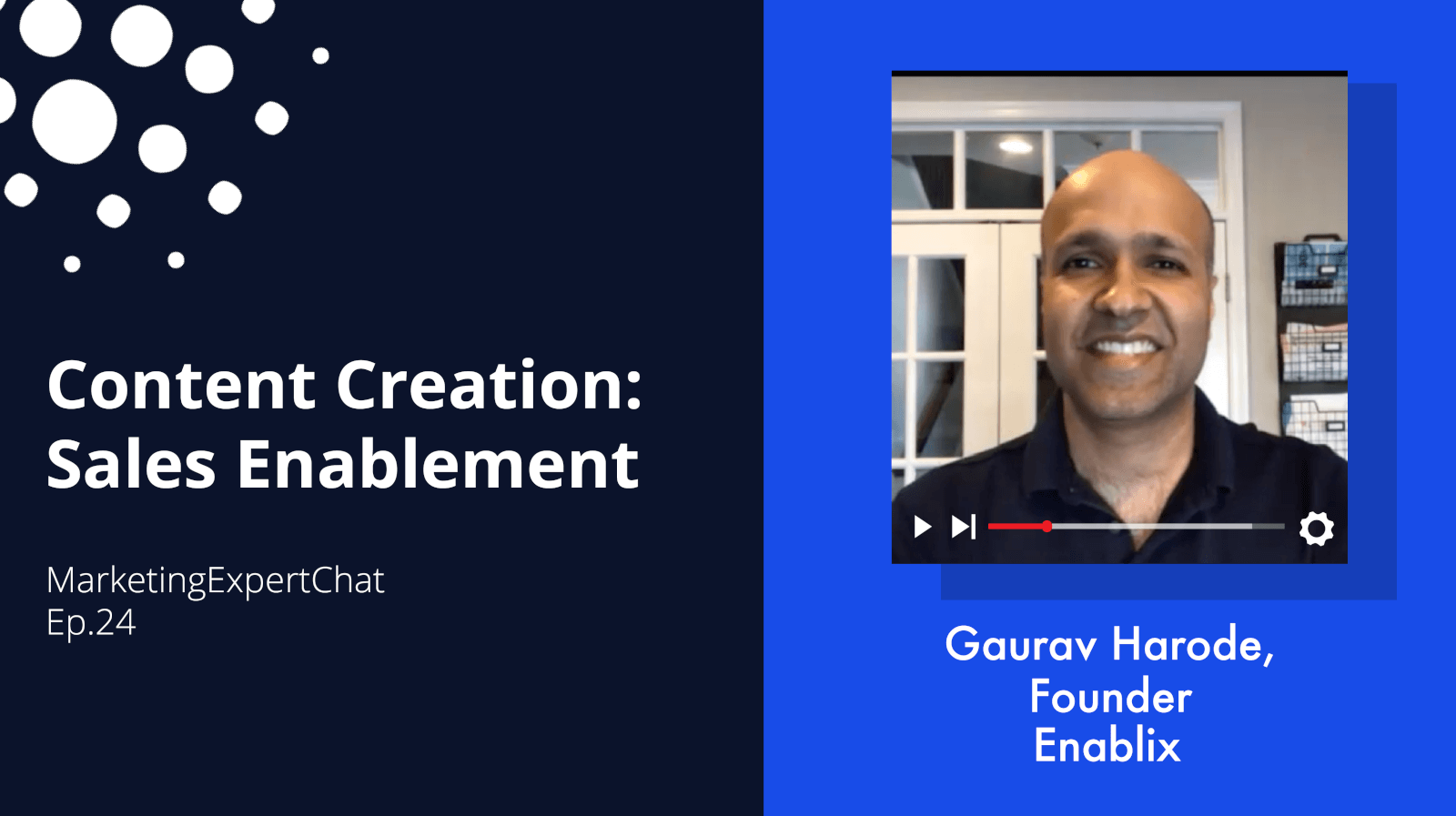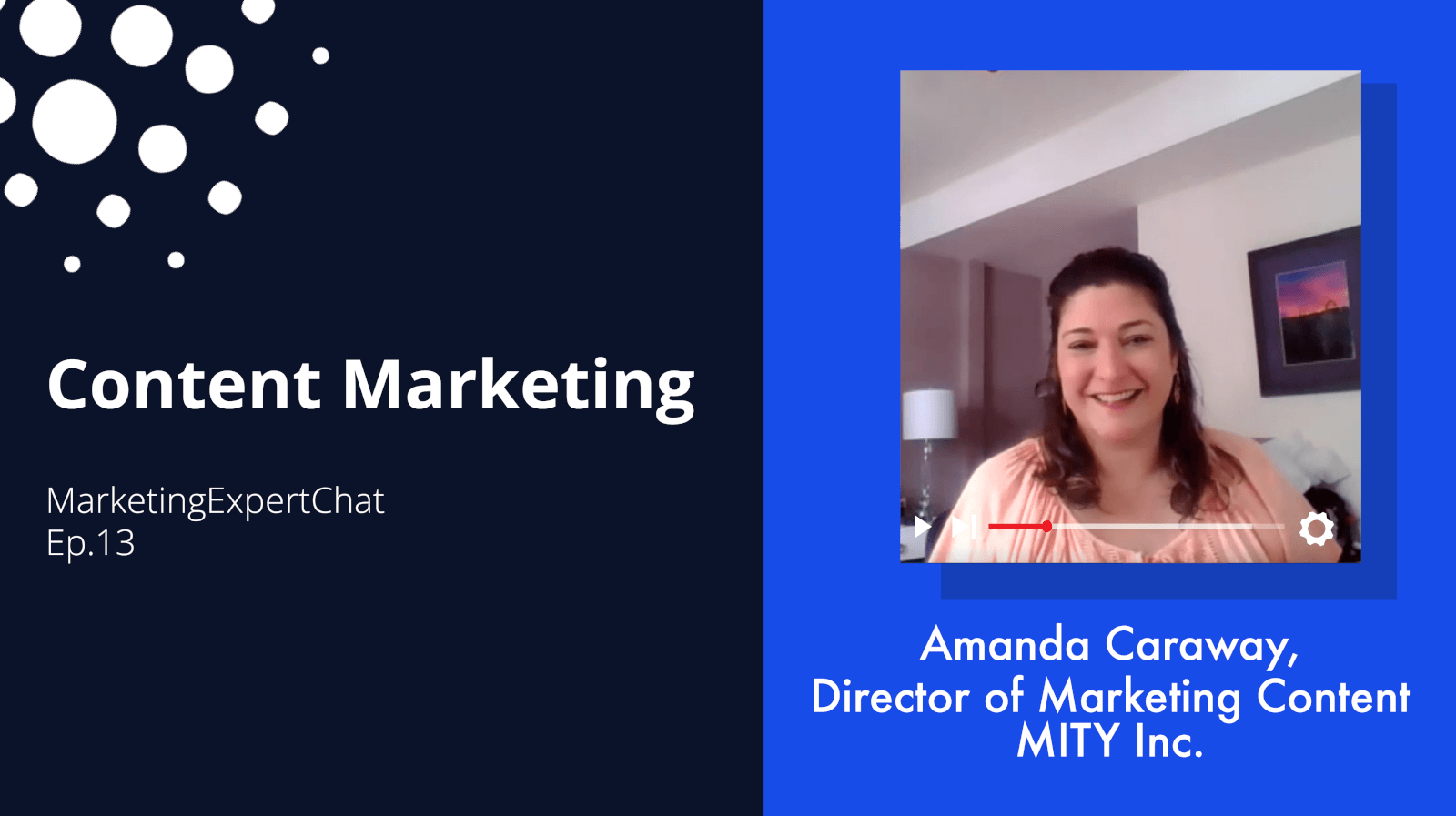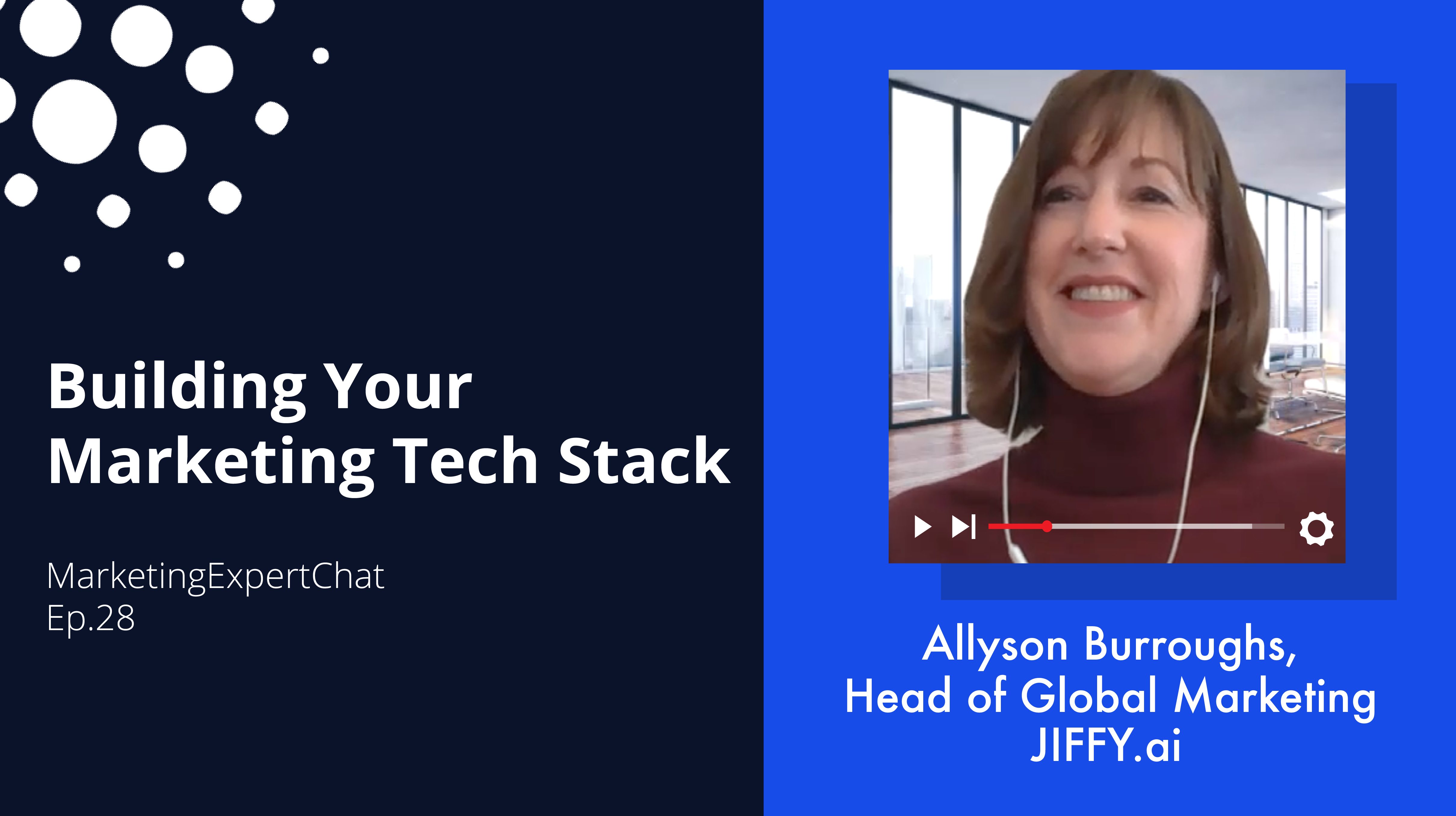Marketing is often ignored as a field that has the potential to make real impact on a business’s revenue stream. It’s easy to forget that with the right goals and strategies, marketers can take a direct role in increasing business revenue, growth, and success.
So, it’s up to marketers to prove that they’re good at their job and deserve to be decision-makers. Once a marketer has a seat at the proverbial table, they can help shape the path of a company through the development of a tailored revenue marketing strategy.
But how can marketers get to that point? What can they do to prove their value? Our expert guest reveals that through demonstrating revenue attribution, connecting with customers, and becoming deeply knowledgeable about their company, a marketing executive and their team can show what they can do for revenue generation.
“...The number one thing a marketing exec should do is develop a customer insight program and spend as much time as possible with customers, whether that's in person, if it's in manufacturing, get into the manufacturing facility, spend time on the floor, spend time in the break room, spend time talking to anyone that will talk to you at the company.”
How Marketers Can Prove Their Worth
In this week’s Growth Marketing Chat episode, Sarah Scudder, CMO at SourceDay, reveals what it takes to become an invaluable marketer. Marketers can gain a seat at the table by:
- Proving their contribution to revenue
- Having knowledge of all the solutions used by their company
- Knowing the business data inside and out
- Spending time getting to know the customers and their needs
The right revenue and growth marketing strategies will help marketers show their goals and contributions to the business.
Video Transcript:
NICK: Hello, today we have another very exciting guest. Sarah Scudder, Chief Marketing Officer at SourceDay. SourceDay has the mission to automate purchase order changes and enable supplier collaboration. Sarah, welcome to Growth Marketing Chat.
SARAH: Thank you, and I'm a Texan now, so I've got to practice my y'all and my howdies. So howdy from Texas.
NICK: Howdy right back at you. Well, thank you for joining us today, you've had a really kind of an exciting journey in this industry. So maybe that's a good place to start. Can you tell us a little bit about your professional path as a marketing executive in the manufacturing space and kind of what led you to being a CMO at this exciting company today?
SARAH: Absolutely, and I will correct, my last name is actually pronounced Scudder, so it's Sarah Scudder. A lot of people don't get the double, D so just wanted to correct it. Yeah, so I was planning to go into the fashion industry. So my vision was to major in marketing, work for a company that produced fashion shows and then potentially have my own fashion production company. And so where I wound up is completely different and completely outside of the world of fashion, but who knows, maybe someday it'll all come full circle. So I attended a very, very small state school in California, which is where I lived my entire life until I moved to Austin a couple months ago for my new CMO role. And I was a double major in business and economics. I have an emphasis in marketing, and like I said, I was planning to, as soon as I graduated somehow get connected in the fashion space. And I had finished my presidency of my sorority, go AGD's. And we produce a big, big fundraising event every year to raise money for our national philanthropy, which is diabetes.
So I decided as kind of my last hurrah, before I graduated, I was gonna co-chair our big event. And when we were starting to, Katie and I who were putting on the event, we were starting to go through everything and we figured out, wow, there's a lot of things that we need to procure for this event. We needed to buy media, we needed to buy promo, we needed to buy print, we needed to buy swag, all these different things. And we said, we have no experience in procurement, we don't even really know what it means. We had super full class schedules. And so I said, you know what? I'm gonna do some research and see if there are any companies that we could use to manage buying all this stuff for us.
So I found a local company called Golden Pacific Systems that was a procurement company that specialized in sourcing all things marketing. So anything marketing related that a company needed, they would source and procure. So we outsourced all of that to them. Had a very, very successful event, we raised more money that year than we ever had in the history of our sorority. And when I was done with the event, the company came to me and said, would you be interested in working for us? We need more females in our industry. We wanna become larger and national. They were a very small and regional company, and they were interested in developing a possible internship program with Sonoma State. So I'm thinking this has absolutely nothing to do with fashion no way, but I decided, you know, to consider the opportunity and already knowing the team. And so I spent some more time over the next couple months interacting and learning a little bit about procurement and supply chain, and decided that I was just gonna go for it. And I was just gonna take the opportunity. So I joined the company, actually I signed my contract and everything before I graduated, but the week after I graduated from college, I started. And what I spent my first couple of years doing was really assessing and looking at the market. And I saw a big opportunity for a company to adapt and leverage technology to help our company provide better solutions for people that were wanting to procure and source marketing related things.
So luckily the owner of the company was open to new ideas, new ways of running his business. And so we rolled out a technology solution that we sold to companies that was procurement focused and specifically an indirect procurement in the marketing space. So I started my career in sales actually. So I was going out and selling our technology solution into people in supply chain and procurement. And so I did that for several years and then we were acquired by a larger company that was actually based on the east coast that wanted to expand their west coast presence. Again, company was in the indirect procurement space, specifically focused on the marketing spend. So once that acquisition happened, I've actually became the Chief Growth Officer for the company. So I was really focused on strategy, figuring out how to go to market, how we could tailor and make our solution more customized. And I was there for a couple years, and then I had an opportunity to actually join a tech startup and run sales and marketing for them. So that's kind of my career transition and pivot. And then in October of last year, I actually joined SourceDay as their Chief Marketing Officer. And we are in the direct procurement space. So a little pivot, I had spent the first part of my career. In the indirect space, and now I'm focused on the direct side of the industry.
NICK: Wow That's a pretty exciting journey to this point. And just reviewing your background, you've been a chief growth officer, a chief revenue officer, and now you're a chief marketing officer. What kind of overlap do you see between these roles and how are they different in your experience?
SARAH: Yeah, so as I began to develop in my sales career, and again, I was focused on enterprise SAS tech sales, I realized how important good marketing was. And that marketing is the actual engine that should be driving demand gen for companies. And as I got more and more into it, I just said, this is what I absolutely love, and this is what is missing from so many companies. There are many, many organizations that I've worked, in interacted with, that I have friends that work at where marketing is kind of a joke. They're just there, they spend a bunch of money, but there's not really any metrics or they're not really helping impact the company. And I think if marketing is done correctly, marketing can become the demand gen for the entire company where you're going out and educating the market at scale. So when people are ready to buy, they think of your brand. Now you asked what do I think the difference is between sales and marketing. So marketing is educating the market at scale and sales is guiding somebody through the process when they're actually ready to buy.
NICK: Yeah. Yeah. You know, we run into this a lot as a marketing agency and we're passionate about generating revenue and really making that impact because marketing deserves a seat on that table, right? And like you said, when marketing is done correctly and implemented with kind of a long-term vision, it can really be a game changer for the entire company.
SARAH: And I would change, you said marketing deserves a seat at the table, oftentimes they don't because they're not generating revenue and they're not really adding value to the company. Good marketing, good marketing execs deserve a seat at the table.
NICK: Totally, totally. And I mean, what's the point of even having marketing if you're not driving that impact? Right. And I think a lot of companies and department and executives struggle with that attribution and really struggle with showing their impact to the full buyer journey. And in your experience, what is the most important factor that impacts marketing's ability to contribute to revenue?
SARAH: I would say the number one thing is marketers don't spend enough time with customers. There are people that I've worked with that are in marketing that have never spoken to one of their customers. How can you create content? How can you create a strategy when you don't even know your customer? So the number one thing marketing exec should do is develop a customer insight program and spend as much time as possible with customers, whether that's in person, if it's in manufacturing, get into the manufacturing facility, spend time on the floor, spend time in the break room, spend time talking to anyone that will talk to you at the company. With COVID and some of the craziness happening, I know it's not always an option right now to be in person, set up Zoom interviews.
In my new role here, I'm two and a half months in, I've already launched a customer insight program. And I have a goal for my team, everyone in marketing needs to talk to at least five customers per quarter. And so I think so much happens once you understand the customer. And that also includes interacting and talking to people in the industry as well. So if you're in manufacturing, for instance, which is, right now, I'm in manufacturing, distribution, and CPG retail, I wanna be in front of other people who aren't our customers, but that are experts and that have experiences and are people that we may potentially wanna sell to in the future or maybe potential buyers. But the more knowledge that you can acquire and gain from those people, the better your marketing is going to be. The second thing that I think is really important is you need to figure out where your buyers go to get their information. And for every company that's different.
So if I'm a B to C brand, it may be Insta. My buyers may be on Insta. For us at SourceDay from the research I've been doing so far through email surveys, through customer interviews, through panels, the number one, what I call dark social channel, and I call it dark social because you can't attribute exactly where things come from. Attribution software doesn't necessarily work, but if they're very, very powerful channels is LinkedIn. So more often than not, if somebody that we talk to goes to social media to get information, they're going to LinkedIn. So for our company, our main, main focus and driver of demand gen this year is LinkedIn.
NICK: Awesome. That's something we hear across the board and a lot of our B2B clients. Can you talk a little bit more about how you're approaching your LinkedIn strategy, both from the organic and maybe from the paid side as well?
SARAH: Yeah, so once you figure out where your buyers are, and again, I wanna be very clear that LinkedIn may not be the right strategy for you. For B2B SaaS companies in my vertical, it absolutely is, but you need to really figure out is it TikTok? Is it YouTube? Is it Facebook? So my LinkedIn strategy is doing a couple things. The first thing is posting really useful content every single day on LinkedIn. And useful content is not, hey, it's my work anniversary. Or hey, we won this big award. Posting useful content is actually taking time to think about thoughtful insights that your buyers want to read and will learn something from.
Something that they will think is useful. And if you yourself are not an expert in your industry, it's important to hire an expert on your marketing team or go find an expert at your company and sit down with them weekly, or however regularly you need to, to pull knowledge from them so you can use that for your content. So post regularly is really important. And then there's a whole strategy around how to post, when to post, hashtags, we're not gonna get into all of those details here, but make sure you're using best practices for your posting. And this is really, really hard because a lot of companies, people do not feel comfortable posting content on LinkedIn. They feel like they don't know what to say, they think it's a waste of time. So the best thing you can do is have lead by example and get somebody on your executive team to buy in and have them post regular content. At SourceDay, it's me.
So I'm a huge proponent of LinkedIn. I have spent the last few years becoming really knowledgeable about supply chain. And so I'm that person at the company, and I'm leading by example by posting every single day on LinkedIn. Now I also am owning all of our posting from our company page. So when I joined, they had an intern posting the content on our most important platform. A college intern is highly likely not your industry expert and should not be posting your content. So I now do that myself. So I'm posting on my own page and then I'm also posting content on our company page. The second thing, the second way that I'm using LinkedIn is I am trying to build a community. I think community is an incredible way to get insights about your buyers and establish a brand and be known as the thought leader and an industry expert. And so to do that, I am hosting right now two LinkedIn Live shows a month. One is a "Women in ERP" show, and one is a "Manufacturing Woe" show. And each month I have a different panel of experts, for my ERP show, it's only women, so it's women only panels, and I afford a five panelists each month. And these are people from all different types of companies that have expertise in ERP. The second show is Manufacturing Woes, and I have people in manufacturing come on and tell their absolute, most train wreck nightmare stories that they have lived through in manufacturing.
So think about the craziest worst of the worst somebody lived through, that's what they come on and talk about. So those shows I run for an hour. And then as soon as the show is done, StreamYard, which is the application that I use post the video directly on LinkedIn, adds the closed captions. And I also stream the shows through StreamYard, to Twitter and to YouTube. And then we take that video, we do any editing if we need to, we post that on YouTube, we post it on our website and then we'll break it up into smaller videos and use that as content throughout the month on LinkedIn throughout various posts.
NICK: Very robust strategy. What are your thoughts on posting versus commenting and engaging? And do you, it sounds like you spent a lot of time posting, but I've also seen you pretty active with engagement, so. Can you talk through what's that all about?
SARAH: So I mean to give people a sense, I am on LinkedIn at least two hours a day, seven days a week. So I'm on more on the weekends, but I definitely block out time in my calendar every single day for LinkedIn. So once I write and do my post, then I'm absolutely spending time engaging on other people's posts. So I'm reacting and I'm commenting. And I think that's so, so important to find people that post knowledgeable good information in your industry and engage. It does a couple of things, it puts you on their radar, so they're gonna know your name, they're gonna know your company. They may have a podcast, they may be hosting a show and might reach out and ask you to be a speaker. If it's a company that could benefit from your service, they're gonna recognize your name and see you commenting, and they may reach out to you if they have a need to buy your product or service. So absolutely it's important to engage and interact with other people's posts. And I think it's really important to be strategic about who you're doing that with. So I actually have a list that I've created, it's a spreadsheet and it is prospects, customers, influencers. So I make sure I'm spending the time on LinkedIn with the right people that I wanna be engaging with.
NICK: Yeah, yeah. And I think maybe, kind of an underrated benefit of all of this is that you're staying, you're keeping your fingers on the pulse of your industry and you're learning, not only are you putting yourself out there as a thought leader, but you're also learning a ton from your fellow, from your peers in the industry.
SARAH: Yeah, and again, as I mentioned, you should not be having an intern manage your most important channel. I actually recommend if you can, do it yourself because you're absolutely right, I get so much intel by reading people's comments. And then writing responses and engaging. And some of those then spur ideas for interview questions, those spur content for future posts, spur content for articles. So if you have somebody else doing that, you're not soaking up and getting that information.
NICK: Couldn't agree more. And we can definitely talk about this all day long, but I think we have time for only one more question. And usually we like to end with this question, which is, what were the most challenging skills, the most kind of impactful challenging skills you have to teach yourself along the way?
SARAH: Yeah, so I would say, this is still in progress, it's not past tense, so I am not a super techie nerdy type person. So if an application is a little bit harder, complicated to use, I will steer clear of it or push it off. And, it's really important to have knowledge and understanding of all of the technology solutions that your company's using for marketing and sales. And so for me, I have to really force myself to sit down and spend time in some of the applications that I haven't used before, that aren't super user-friendly, but from a data perspective, it's a must. And being able to know your data inside and out, be able to report on it, to be able to pivot and change quickly based on the data is so, so important, but I'm more of a creative, community speaker type person. So that piece is something that I really have to force myself to do and to learn.
NICK: That's a very self-aware answer. So, really appreciate the honesty, again, from fashion to manufacturing and now you're keeping manufacturing fashionable, really appreciate your time. Thank you for sharing your insights with us. This was a great interview. And before we hop off, where can people find you?
SARAH: Yeah, the best way to find me is on LinkedIn, Sarah Scudder, the Manufacturing Maven, feel free to shoot me a note if you wanna hop on a call and chat about LinkedIn strategies, always, always open to sharing my experiences and knowledge.
NICK: Perfect. Well, thank you Sarah so much and hope to be in touch soon.
SARAH: Awesome, thank you.





